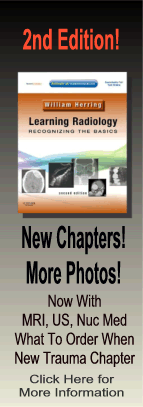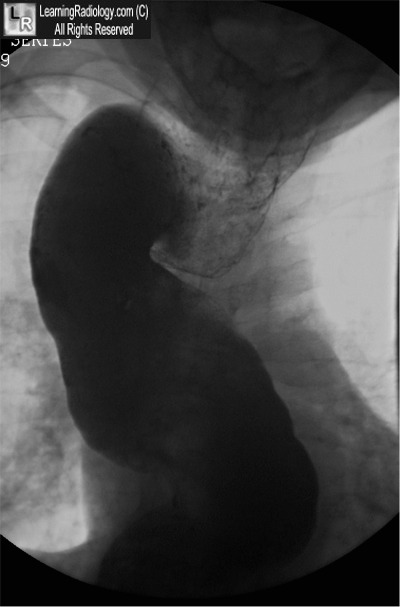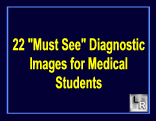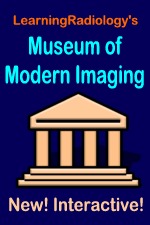| Cardiac | |
|---|---|
| GI | |
| Bone | |
| GU | |
| Neuro | |
| Peds | |
| Faculty | |
| Student | |
| Quizzes | |
| Image DDX | |
| Museum | |
| Mobile | |
| |
Misc |
| Videocasts | |
| Signs | |
Learning
Radiology:
Recognizing
the Basics
Available
on the Kindle
and IPad
LearningRadiology Imaging Signs
on Twitter
![]()
Follow us on
What is the most likely diagnosis?
- 71 year-old with dysphagia
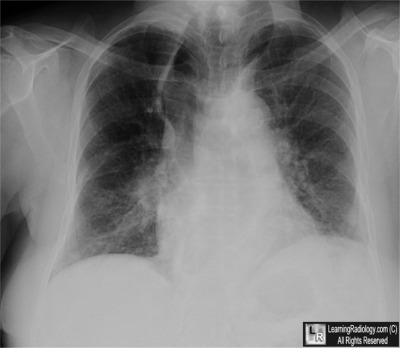
Frontal Radiograph of the Chest
- Overdistension of ETT Balloon
- Aspiration Pneumonia
- Tracheomegaly
- Pneumomediastinum
- Achalasia
Additional Image-Esophagram
![]()
Answer:
5. Achalasia
More (Click Discussion Tab)
Achalasia
General Considerations
- Usually idiopathic in origin
- Degeneration of neurons within the myenteric plexus of the esophageal smooth muscle
- Neuronal destruction is typically inflammatory in nature
- Histologically: lymphocytic infiltrate surrounding the plexus
- Predominantly involves the nitric-oxide producing inhibitory neurons
- Cause smooth muscle relaxation by inhibiting the acetylcholine producing excitatory neurons
- Loss of inhibitory input results in unopposed contractile stimulation and aperistalsis
- Acetylcholine producing neurons (which stimulate smooth muscle contraction) are relatively spared in this degenerative process
MORE . . .
.
This Week
71 year-old with dysphagia |
Some of the fundamentals of interpreting chest images |
The top diagnostic imaging diagnoses that all medical students should recognize according to the Alliance of Medical Student Educators in Radiology |
Recognizing normal and key abnormal intestinal gas patterns, free air and abdominal calcifications |
Recognizing the parameters that define a good chest x-ray; avoiding common pitfalls |
How to recognize the most common arthritides |
LearningRadiology
Named Magazine's
"25 Most Influential"
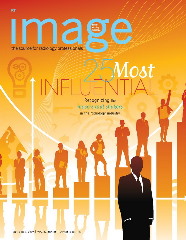
See Article on LearningRadiology
in August, 2010
RSNA News
| LearningRadiology.com |
is an award-winning educational website aimed primarily at medical students and radiology residents-in-training, containing lectures, handouts, images, Cases of the Week, archives of cases, quizzes, flashcards of differential diagnoses and “most commons” lists, primarily in the areas of chest, GI, GU cardiac, bone and neuroradiology. |

